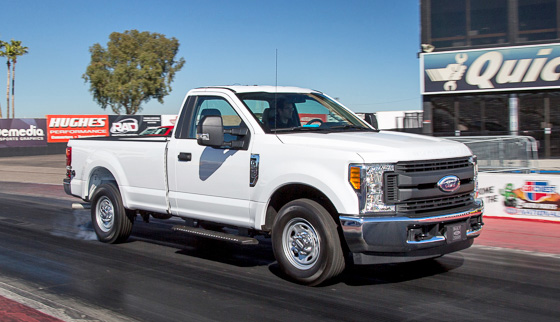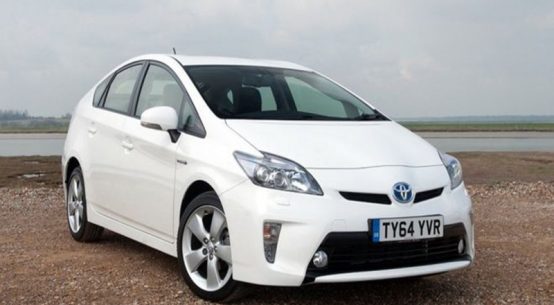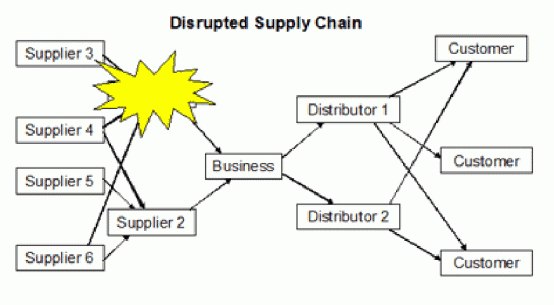
The 2014 Toyota Tundra, though fairly extensively refreshed, is still the same old Tundra.
At more than $47,000, the typical cost of a new pickup truck is enough to give most Americans sticker shock. But sales are heading for new heights this year, as more shoppers find trucks to be an attractive daily driver.
Full-size trucks are poised to become the second-best selling vehicle segment in the U.S., according to new data from Edmunds. The car-shopping site also said the segment, which includes the Ford (F) F-Series and Chevrolet Silverado, is heading for its best market share since 2007.
Full-size trucks are poised to become the second-best selling vehicle segment in the U.S., according to new data from Edmunds. The car-shopping site also said the segment, which includes the Ford (F) F-Series and Chevrolet Silverado, is heading for its best market share since 2007.
Industry sales over the last few years signal that consumers are more interested in larger vehicles. While sedans are falling out of favor, SUV sales continue to rise. Light trucks, including SUVs, pickups, and vans, are responsible for about 62% of U.S. sales through the first nine months of 2017, according to Autodata. Sales of passenger cars are down 10.5% compared to the same period last year, persuading automakers to boost discounts and cut production Opens a New Window.
The shift to SUVs also appears to be a boon for trucks, Edmunds says. Buyers are not only showing an appetite for roomier crossovers, but they are using full-size pickups as family haulers. Crew cabs—trucks with four doors and a full back seat—account for 74.4% of all retail truck registrations, up from 63.7% just five years ago.
Modern trucks are more refined than past generations, offering similar technology and creature comforts found in SUVs. Top brands such as Ford and General Motors’ (GM) Chevrolet even offer models with interiors that rival luxury makes.

“Shoppers used to just see trucks as either a work vehicle or a second vehicle used primarily for towing and chores,” said Ivan Drury, Edmunds senior manager of industry analysis. “But trucks now have many of the same creatures comforts as SUVs, but with added utility.”
Industry sales over the last few years signal that consumers are more interested in larger vehicles. While sedans are falling out of favor, SUV sales continue to rise. Light trucks, including SUVs, pickups, and vans, are responsible for about 62% of U.S. sales through the first nine months of 2017, according to Autodata. Sales of passenger cars are down 10.5% compared to the same period last year, persuading automakers to boost discounts and cut production Opens a New Window.
FOLLOW US ON FACEBOOK FOR MORE LOGISTICS NEWS
The shift to SUVs also appears to be a boon for trucks, Edmunds says. Buyers are not only showing an appetite for roomier crossovers, but they are using full-size pickups as family haulers. Crew cabs—trucks with four doors and a full back seat—account for 74.4% of all retail truck registrations, up from 63.7% just five years ago.
Modern trucks are more refined than past generations, offering similar technology and creature comforts found in SUVs. Top brands such as Ford and General Motors’ (GM) Chevrolet even offer models with interiors that rival luxury makes.
“Shoppers used to just see trucks as either a work vehicle or a second vehicle used primarily for towing and chores,” said Ivan Drury, Edmunds senior manager of industry analysis. “But trucks now have many of the same creature comforts as SUVs, but with added utility.”
Edmunds noted that October is one of the best times to buy a truck. Shoppers can find a bargain during “truck month” promotions from Chevrolet, GMC, Ram and Nissan, which are offering 0% financing on outgoing 2017 trucks.
Through September, annual sales of Ford F-Series trucks grew 10.6% versus 2016. Ram’s sales are up 4%. Chevrolet Silverado sales have dropped 1.6%, while its premium sibling, the GMC Sierra, is down 6.1%. GM and Ram are expected to launch new full-size trucks in 2018.








